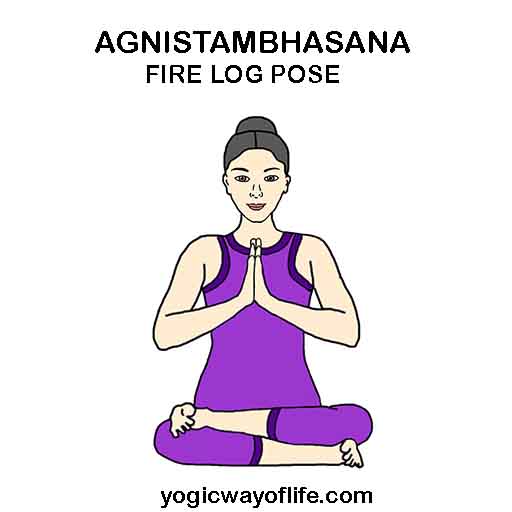Agnistambhasana or the Fire Log Pose is a good hip opener. In Sanskrit, Agni means fire, Stambha means statue and Asana means a Pose. Agnistambhasana is an easy pose and can be used to improve the flexibility of the hips and groin muscles.
How to do Agnistambhasana (Fire Log Pose)?
- Sit in any comfortable position on the floor. Keep the legs stretched out.
- Bend the left knee and place the left leg in front of you.
- Bend the right knee and place the right leg on top of the left leg. The two legs will look like two logs of wood piled over one another from the front. The two legs will form a triangle along with the hips.
- Sit straight. Inhale deeply and lengthen the spine. Keep the back and spine straight. Now relax and breathe normally.
- The hands can be placed on the knees or it can assume a prayer position or Namaskara position with the two palms together.
- This is the final position. Remain for as long as you are comfortable.
- There are many variations which use this as the base position. For example, bending forward and placing the hands on the floor is one such variation used for stretching the hip muscles. It is used by practitioners to create a flexible hip and groin muscles.
Benefits of Agnistambhasana (Fire Log Pose)
- Agnistambhasana stretches the hip and groin muscles.
- It can be good aid for those who want to practice meditative postures like Padmasana for long durations. Forward bends, after assuming Agnistambhasana is used as a preliminary practice to loosen up the hip joints for sitting in Lotus posture. The key point while sitting in Padmasana is that the knee joint should not be stressed. All the bending and flexing should happen at the hips. Else you can injure the knee joint. Hence, Agnistambhasana and its variations is used for creating this flexible hip joints.
Contraindication for Agnistambhasana
Those who suffer from any hip or knee injury should not do this asana. Also those with any recent surgeries of the hip or knee should not attempt this pose.

